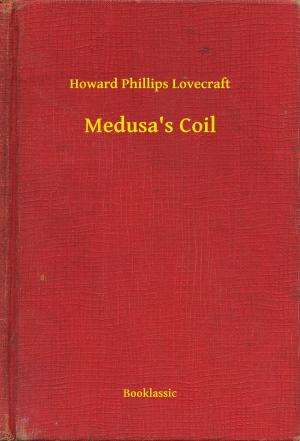The Dust of Death: The Story of the Great Plague of the Twentieth Century
Fiction & Literature, Thrillers, Mystery & Suspense| Author: | Fred Merrick White | ISBN: | 9789635267262 |
| Publisher: | Booklassic | Publication: | June 29, 2015 |
| Imprint: | Language: | English |
| Author: | Fred Merrick White |
| ISBN: | 9789635267262 |
| Publisher: | Booklassic |
| Publication: | June 29, 2015 |
| Imprint: | |
| Language: | English |
A short story in the "Doom of London" series. It begins:
"The front door bell tinkled impatiently; evidently somebody was in a hurry. Alan Hubert answered the call, a thing that even a distinguished physician might do, seeing that it was on the stroke of midnight. The tall, graceful figure of a woman in evening dress stumbled into the hall. The diamonds in her hair shimmered and trembled, her face was full of terror.
"You are Dr. Hubert," she gasped. "I am Mrs. Fillingham, the artist's wife, you know. Will you come with me at once... My husband... I had been dining out. In the studio... Oh, please come!"
... "Hubert walked up the drive and past the trim lawns with Mrs. Fillingham hanging on his arm, and in at the front door. ...a human figure lying on his back before the fireplace. The clean-shaven, sensitive face of the artist had a ghastly, purple-black tinge, there was a large swelling in the throat. ... 'Diphtheria!' he exclaimed. 'Label's type unless I am greatly mistaken. Some authorities are disposed to scoff at Dr. Label's discovery. I was an assistant of his for four years and I know better. Fortunately I happen to know what the treatment—successful in two cases—was.'"
That is only the beginning. The doctor consults Dr. Label, whose theory is that the disease originates in the soil where houses have been built over former garbage dumps or where raw refuse was used as construction fill in London. "For years I have been prophesying an outbreak of some new disease—or some awful form of an old one—and here it comes."
The reader should keep in mind that this was written before the development of antimicrobial drugs, so a diptheria outbreak was very serious. However, even in 1903 there was a treatment for diphtheria, involving injection of anti-toxin produced from animals immunized against heat-inactivated diphtheria bacteria, but it was not used widely or adequately. (http://en.wikipedia.org/wiki/Diphtheria). Today, people are immunized against diphtheria during childhood.
First published in Pearson's Magazine, March 1903 with illustrations by Warwick Goble. The illustrations can be seen at the Project Gutenberg Australia souce; they are omitted from this eBook.
Reprinted in Science Fiction By The Rivals Of H.G. Wells, Castle Books, 1979.
A short story in the "Doom of London" series. It begins:
"The front door bell tinkled impatiently; evidently somebody was in a hurry. Alan Hubert answered the call, a thing that even a distinguished physician might do, seeing that it was on the stroke of midnight. The tall, graceful figure of a woman in evening dress stumbled into the hall. The diamonds in her hair shimmered and trembled, her face was full of terror.
"You are Dr. Hubert," she gasped. "I am Mrs. Fillingham, the artist's wife, you know. Will you come with me at once... My husband... I had been dining out. In the studio... Oh, please come!"
... "Hubert walked up the drive and past the trim lawns with Mrs. Fillingham hanging on his arm, and in at the front door. ...a human figure lying on his back before the fireplace. The clean-shaven, sensitive face of the artist had a ghastly, purple-black tinge, there was a large swelling in the throat. ... 'Diphtheria!' he exclaimed. 'Label's type unless I am greatly mistaken. Some authorities are disposed to scoff at Dr. Label's discovery. I was an assistant of his for four years and I know better. Fortunately I happen to know what the treatment—successful in two cases—was.'"
That is only the beginning. The doctor consults Dr. Label, whose theory is that the disease originates in the soil where houses have been built over former garbage dumps or where raw refuse was used as construction fill in London. "For years I have been prophesying an outbreak of some new disease—or some awful form of an old one—and here it comes."
The reader should keep in mind that this was written before the development of antimicrobial drugs, so a diptheria outbreak was very serious. However, even in 1903 there was a treatment for diphtheria, involving injection of anti-toxin produced from animals immunized against heat-inactivated diphtheria bacteria, but it was not used widely or adequately. (http://en.wikipedia.org/wiki/Diphtheria). Today, people are immunized against diphtheria during childhood.
First published in Pearson's Magazine, March 1903 with illustrations by Warwick Goble. The illustrations can be seen at the Project Gutenberg Australia souce; they are omitted from this eBook.
Reprinted in Science Fiction By The Rivals Of H.G. Wells, Castle Books, 1979.















